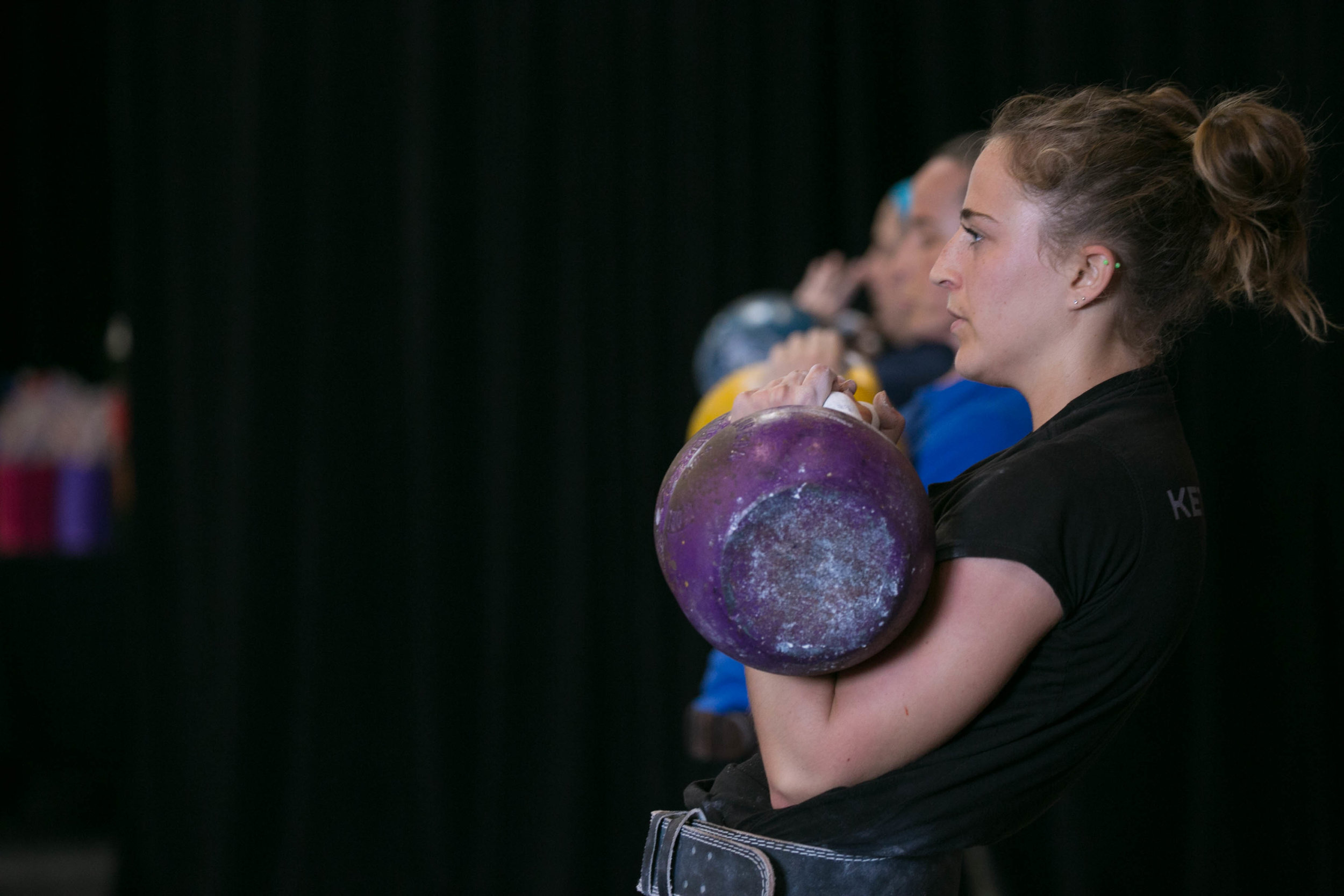The Importance of Relaxation
Efficiency and relaxation
The goal of Kettlebell Sport technique is to use gravity, weight shifting, breathing, and proper timing to move the kettlebells as efficiently as possible, so that you can complete as many repetitions as possible. In order to incorporate these four elements into your lifting, you must learn to relax - at the appropriate times.
The juxtaposition of relaxing certain parts of the body and simultaneously engaging others is exactly what makes the sport of kettlebell lifting so challenging.
Rest positions for each lift
Rest positions in Kettlebell Sport lifts are the backswing, rack position, and overhead position. Relaxing means keeping the fingers relaxed around the bell handle in the backswing (no death grip), sinking the elbows to the iliac crest in the rack position, and packing shoulders and stacking joints in the overhead position.
Below are two Long Cycle sets I completed during the same training session - one in which I experienced perfect timing and relaxation (for me), and one in which I did not relax in the rack position (and therefore couldn't relax in lockout either) and thus failed to complete the assigned set.
Example of good relaxation
Long Cycle with 16kg kettlebells is where I feel relaxed in every rest position. My arms are straight and shoulders and traps relaxed in the backswing. As soon as my elbows hit the rack, I'm already relaxed and I can feel my iliac crest, which will help me easily launch the bells from my hips. In the overhead position, I achieve lockout quickly and feel no work in my shoulders at all. These elements are a MUST when going high pace - in this video, I hit 13rpm each minute for 3 minutes.
Example of not so good relaxation
Long Cycle with 24kg kettlebells is where I struggle to feel relaxed. I lean too far back in the rack position, which means I am not maximizing connection to my hips. Without a strong connection to my hips, my bump is weaker and the bells don't get to the overhead position fast enough, so I end up having to push the bells with my arms to finish the rep. As a consequence of failing to relax, I wasn't able to complete my 2 minute set and had to try multiple times just to get 10 repetitions in a row.
Practicing relaxation
Not being able to relax when working with heavy bells (whatever weight that means to you) is normal - only time underneath the heavier weights will allow you to get comfortable and confident enough to relax at the appropriate time.
To train relaxation with heavier bells, doing slow Jerk or Long Cycle sets is helpful - on each rep, rest for 5 seconds in the rack, first dip, second dip, and overhead position. Similarly, rack and overhead holds for 1-2 minutes at a time will train the body to relax under load in the rest positions.
Mobility is key to relaxation
Another incredibly important component of being able to relax while lifting kettlebells is having the proper mobility to get into each rest position. Without the requisite shoulder and upper spine flexibility, resting in the rack or overhead position may be virtually impossible until you address the underlying problem. If you are interested in learning about mobility specific to Kettlebell Sport, please email info@kbfitbritt.com to purchase my new program.
